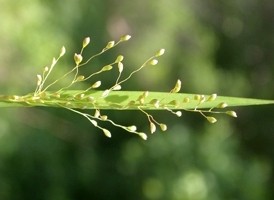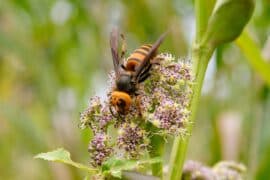Softleaf rosette grass
(Panicum dichotomum)

Description
Dichanthelium acuminatum, the tapered rosette grass, is a species of grass from the genus Dichanthelium, in North America. Dichanthelium acuminatum forms a hybridization complex with other Dichanthelium species such as D. dichotomum, D. sphaerocarpon, D. ovale, and D. aciculare. Dichanthelium is genus of flowering plants of the grass family, Poaceae. They are known commonly as rosette grasses and panicgrasses. Formerly a subgenus of the genus Panicum, Dichanthelium was elevated to genus status in 1974. Its species are still treated as members of Panicum by some authorities, because the two genera are very similar in form. Molecular data support the recognition of Dichanthelium as a separate genus. The name Dichanthelium originates from the Greek for "twice-flowering", in reference to the vernal and autumnal growth phases. These are perennial grasses, sometimes with rhizomes. The grasses may overwinter as rosettes of short, wide leaves and then produce longer, wider leaves on the stem during spring. They produce hollow stems a few centimeters tall to well over one meter. They are upright to erect when new, then sometimes sprawling, spreading, and bending as the season progresses. The upper stems may have a few main branches that divide into smaller branches bearing panicles. There are primary panicles, which may be chasmogamous, and secondary panicles, which are often cleistogamous. The spikelets are roughly 1 to 5 millimeters long and lack awns. In the Chicago area, Dichanthelium is considered the most emblematic genus of the Gulf and Atlantic coastal plain disjunct habitat found in that region.
Taxonomic tree:







